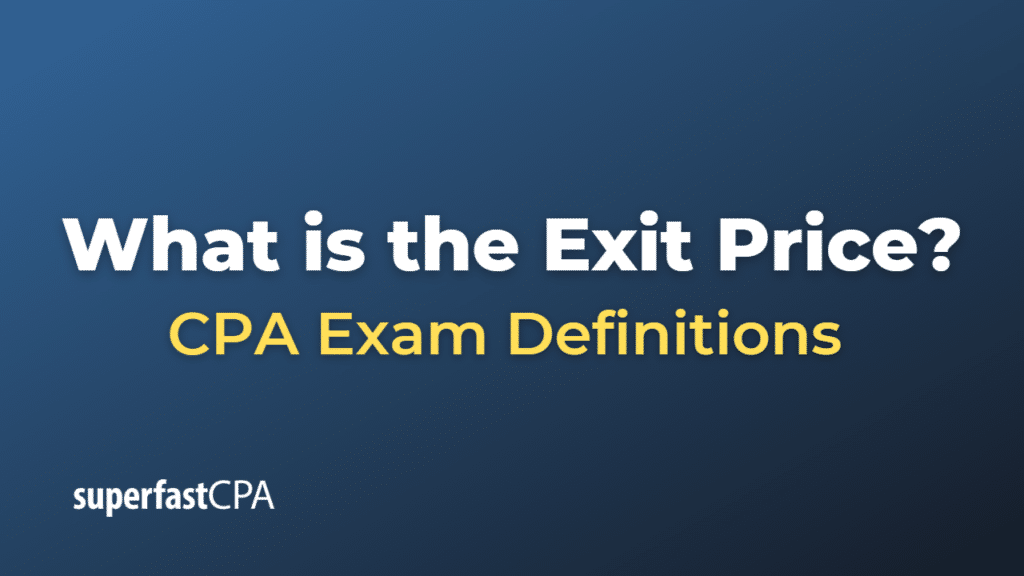Exit Price
The term “exit price” can be used in different contexts in the financial world, often relating to investments, and can have slightly different meanings depending on the situation.
- In Investing: Exit price refers to the price at which an investor sells an investment. For example, if an investor buys shares of a company at $10 each, and later sells them for $15 each, the exit price is $15. The difference between the entry price (purchase price) and the exit price represents the gain or loss on the investment.
- In Private Equity and Venture Capital: In the context of private equity and venture capital, the exit price often refers to the price received when a company is sold or goes public. Private equity firms and venture capitalists invest in companies with the goal of eventually “exiting” the investment through a sale or initial public offering (IPO). The exit price in this context is critically important, as it determines the return on the investment.
- In Accounting and Fair Value Measurement: In the context of fair value measurement under International Financial Reporting Standards (IFRS) and U.S. Generally Accepted Accounting Principles (GAAP), the exit price is the price that would be received to sell an asset or paid to transfer a liability in an orderly transaction between market participants at the measurement date. This is an important concept in the fair value measurement of assets and liabilities.
As with all investment decisions, the determination of the appropriate exit price requires careful analysis, and often involves considering various factors, such as the performance of the investment, market conditions, and the investor’s financial goals and risk tolerance.
Example of the Exit Price
Investing: Let’s say an investor purchased 100 shares of a company’s stock at $20 per share, meaning they spent $2,000. A few years later, the price per share has risen to $30. The investor decides to sell all their shares at this price. Here, the exit price is $30 per share, and the total return from selling the shares is $3,000 ($30 per share * 100 shares).
Private Equity and Venture Capital: A venture capital firm invests $5 million in a technology startup. Five years later, a larger technology company acquires the startup for $50 million. The venture capital firm owned 20% of the startup, so it receives $10 million (20% of $50 million) from the sale. The exit price in this context is effectively the $10 million received from the sale.
Accounting and Fair Value Measurement: A company owns a piece of machinery with a book value (historical cost minus accumulated depreciation) of $100,000. The company needs to determine the fair value of the machinery for its financial statements. It determines that the machinery could be sold in its current condition for $80,000. Here, the exit price would be considered $80,000, as this is the price that would be received in an orderly transaction between market participants. The company would then record an impairment loss of $20,000 ($100,000 book value – $80,000 fair value) to adjust the carrying amount of the machinery to its fair value.
Remember, these are simplified examples and actual situations could be more complex. Always consult with a financial advisor or accountant when dealing with investment decisions or accounting measurements.













